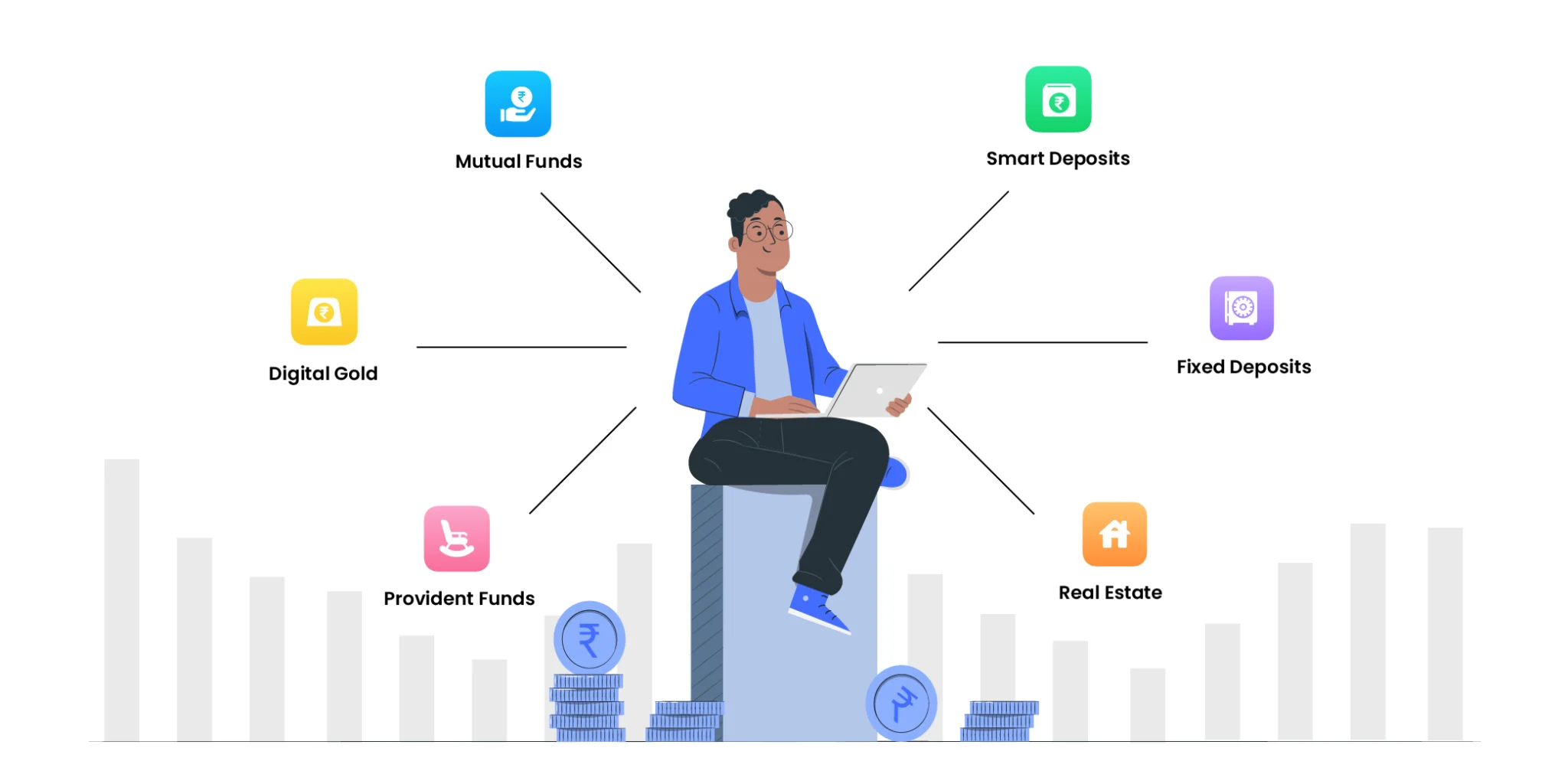When the lock-in period of ELSS funds is over, many investors are faced with this question: ‘What’s next?’ Known for its tax-saving benefits and growth potential, ELSS funds are favoured by many investors to save taxes. Compared to other traditional tax-saving instruments like tax-saving FDs and PPF, ELSS comes with the shortest lock-in period of three years. But after the lock-in period, should you invest more, redeem or hold?
In this blog, we are explaining what you can do once the lock-in period of your ELSS funds ends.
First Step: Understand, Learn & Calculate
The first step you need to take after the lock-in period ends is to understand your current financial goals, learn the performance of your ELSS funds, and calculate the tax you may need to pay if you choose to redeem your investment.
Also read: What is ELSS Funds & How to Invest in India
1. Understand Your Financial Goals
After your lock-in period is over, you need to analyse your current financial goals. As you evaluate your current objectives, ask yourself the following questions:
Has your risk profile changed? Your risk tolerance may have changed since you started investing in ELSS funds. If you are closer to retirement or prefer more stability, you may want to move your investment to less volatile assets.
Are your financial goals the same? Are you looking to continue growing wealth over the long term, or do you need funds for something immediate, like funding a child’s education or buying a home?
Learning the answer to these two questions will give you clarity on whether to redeem, hold, or continue investing in your ELSS fund.
2. Analyse The Performance Of Your ELSS Funds
Review the performance of your ELSS funds and here’s how you can do that:
Check returns against benchmark – Compare your fund’s returns to the benchmark index and the average returns of similar funds. Your fund may not be worth holding on to, if it is continuously underperforming.
Look for consistency over 3 to 5 years – ELSS funds are market-linked and tend to fluctuate. Hence, it is best to evaluate performance over longer periods, like 3 to 5 years. An ELSS fund that has consistently performed well may be worth staying invested in.
Evaluate fund management – If the fund manager or the fund’s investment style has changed to a great extent, it could affect future performance. Look for any recent management or policy changes in the fund.
3. Consider The Tax Implications Of Redemption
Even though the initial investment in ELSS funds qualifies for tax deductions, redeeming it could have tax implications:
Long-Term Capital Gains (LTCG) Tax – Gains over ₹1.25 lakhs are subject to a 12.5% LTCG tax if redeemed after the lock-in period. Calculating your gains and the possible tax liability can help you decide if redeeming right away is beneficial.
Optimise for tax-efficient withdrawals – If your gains exceed ₹1.25 lakhs, consider a phased redemption strategy to lower taxes. By redeeming smaller amounts each financial year, you can potentially stay below the tax threshold.
4. Second Step: To Redeem, Hold, Or Reinvest?
You Should Redeem, If
you have achieved your financial goal or need liquidity, then redeeming might be the best option. If you decide to redeem, there are several productive ways to reinvest your gains.
Increase your emergency fund – Use a portion of your gains to top up your emergency fund if it’s insufficient.
Invest in other mutual funds – Depending on your risk profile, you can consider reinvesting in equity funds, debt funds, or hybrid funds, that align with your goals.
Allocate to short-term goals – For short-term goals, low-risk funds like liquid funds or short-term debt funds might be more suitable, offering relatively stable returns with lower risk.
Focus on retirement planning – If you still have many years until retirement, consider redirecting ELSS gains into a retirement corpus or even tax-saving options like the National Pension Scheme (NPS).
You Should Continue To Hold, If
Your ELSS fund is outperforming – If your ELSS fund is consistently beating the benchmark, consider letting it grow further. Over time, compounding in a well-performing fund can multiply your returns significantly.
Market conditions are volatile – Redeeming during a market downturn might result in locking in lower returns. Waiting for markets to recover could give you a better exit point.
Also Read: ELSS Withdrawal Rules: How to Redeem ELSS SIP Investments?
You don’t need the liquidity – If you don’t need immediate cash, holding onto your ELSS investment can keep your portfolio diversified and aligned with long-term growth goals.
You Should Reinvest, If
Want continued tax benefits – ELSS remains one of the best tax-saving investment options under Section 80C, with the added benefit of potential market-linked returns. So, if you wish to receive tax benefits in the next financial year as well, consider reinvesting in the ELSS fund.
Also Read: Why Should You Opt for Mutual Funds to Save Tax?
Want to build a laddered ELSS portfolio – Consider an SIP in different ELSS funds to create a laddered portfolio. This way, you can systematically save taxes each year and gradually diversify your ELSS investments.
Final Step: Rebalance & Monitor
Rebalance Your Investment Portfolio
The end of your ELSS lock-in period is a great time to review and rebalance your entire investment portfolio. Consider the following steps:
Also Read: Mutual Fund Diversification – How and Why To Do It?
Analyse asset allocation – If your ELSS investment has grown significantly, it might have created an imbalance in your portfolio. Consider rebalancing your portfolio to maintain the right proportion of equity and debt as per your risk tolerance.
Align with financial goals – If you are approaching a major financial goal, like retirement, you might want to shift some funds to safer instruments like debt funds or fixed-income products. This move can help preserve your gains.
Consider sectoral exposure – ELSS funds are usually in diverse sectors, but it’s good to check if you are overexposed to certain sectors in your portfolio and adjust accordingly.
Monitor The Performance Of Your ELSS Funds
Keeping an eye on your investments is extremely important. Even if your ELSS fund has done well historically, regular monitoring and reassessment are crucial.
Review annually – Review your ELSS funds and your overall portfolio at least once a year. Watch out for signs of underperformance and re-evaluate your goals to make sure your investments are on track.
Keep up with market trends – Market conditions and economic cycles change, which might impact your ELSS funds’ performance. Staying informed can help you make informed investment decisions.
Make changes when necessary – Don’t hesitate to switch to better-performing funds or shift strategies if the current one is not meeting your financial objectives.
What’s Next After Your ELSS Lock-In Period Is Over – The Conclusion
The end of your ELSS lock-in period opens up a world of possibilities – from redeeming to reinvesting and even continuing in the same fund. By analysing your financial goals, evaluating fund performance, considering tax implications, and rebalancing your portfolio, you can make a well-informed decision. Whether you choose to redeem, hold, or reinvest, your next move should align with your long-term goals and risk profile.
It is important to remember that ELSS funds are more than just tax-saving instruments – they are powerful tools when it comes to creating wealth, Make the most of your options and continue building a strong, diversified portfolio that serves your financial aspirations. If you are looking to invest in the top ELSS funds, create an account with Koshex today!
Frequently Asked Questions (FAQs)
Can I redeem my ELSS investment immediately after the lock-in period?
Yes. Once the three-year lock-in period is over, you can redeem your ELSS investment.
Will I have to pay taxes if I redeem my ELSS units?
Yes. Long-Term Capital Gains (LTCG) tax applies if the gains from your ELSS investment exceed ₹
1.25 lakhs in a financial year. Gains above this threshold are subject to a 12.5% LTCG tax.
Is switching ELSS funds considered a redemption?
Yes. Redeeming one ELSS fund and investing in another is considered a redemption and a new investment, which will start a fresh three-year lock-in period for the new investment.









Leave a Comment